August 2024 Meetup
Oliver demos mim, Matt gives the news round-up and previews mpbuild
News Round-up
Headlines
Raspberry Pi RP2350
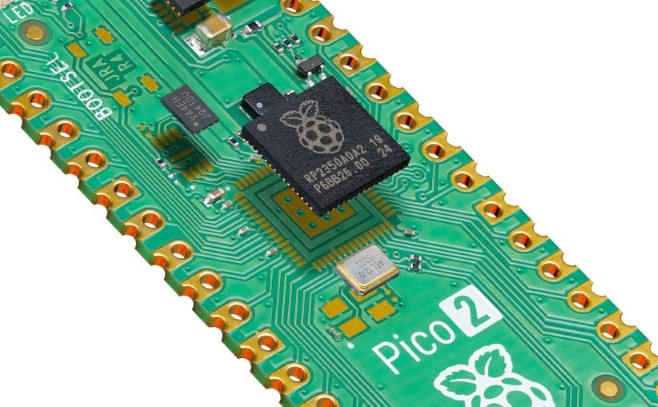
The biggest news of the month is the announcement - at DEF CON 23 - of the RP2350, Raspberry Pi’s successor to the wildy popular RP2040. They also announced the Pico 2 although we’re going to have to wait a few months for the Pico 2 W.
Big ticket items:
- Dual-core Cortex M33 @ 150MHz
- Early perf measurements suggest almost 2x faster
- OR Dual-core RISC-V Hazard3 @ 150MHz
- Unexpected surprise!
- Both ARM/RISC-V are available but you must choose one at boot
- ARM TrustZone
- Can deploy signed, encrypted firmware
- PSRAM support (up to 16MB, QSPI)
- 520KB SRAM, effectively double
- HSTX
- High-speed transmit buffer
- A closer look at HSTX… at CNX gives a good overview
- More GPIO
- 2x packages, QFN-60 and QFN-80 with 30 and 48 GPIO respectively
- Onboard flash
- Currently an option for 2MB, though yet to see any in the wild
- Better technical stuff (Dmitry’s Why you should fall in love with the RP2350 is good for details)
- 3 PIOs (one more), and some improvements to the PIO capabilities
- Floating point support is HW accelerated and includes custom double-precision
- DMA boost
- Improved low power; <10uA claimed
- Very overclockable, 300MHz seems common
As for the Pico 2 board; it’s basically a drop-in for the original (yes, even with micro-B USB) but replacing the RP2040 for the RP2350 and doubling (external) flash to 4MB. For an extra (US) dollar.
All of this is excellent news and my entire wish-list for the RP2040 has been granted!
There were >30 boards announced at launch with partners that include Pimoroni (8x boards!), Adafruit, WIZnet, Seeed, Sparkfun and others.
Damien announced MicroPython support on launch day; pre-built firmware is available and the code is in PR #15619.
The RP2350 is affordable, available, well-documented and powerful.
And yes, it runs Doom!
CircuitPython Day
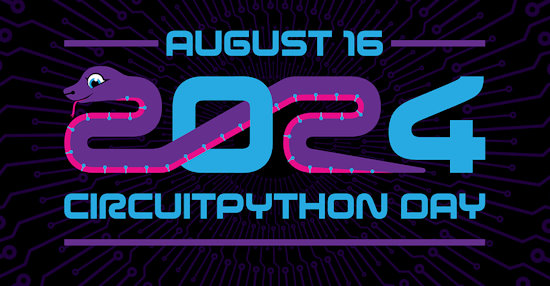
August 16 was CircuitPython day, a day where our Adafruit ‘cousins’ celebrate all things CircuitPython related!
There are a bunch of videos covering various topics, check out the Adafruit blog recap of the day.
And congrats to Anne and the team on the 300th Python on Hardware Newsletter! The weekly newsletter is an invaluable resource and you can subscribe or browse the archive at Adafruit Daily.
Finally in Adafruit news, I’m closely watching Scott’s work on CircuitMatter…
PyCon AU

Matt and Damien both had talks accepted!
Matt’s proposal: MicroPython: The best bits! is online, any feedback would be welcome.
PyCon US
All videos from PyCon US in May are now online.
156 Pythontastic videos for your viewing pleasure!
Espressif DevCon 24
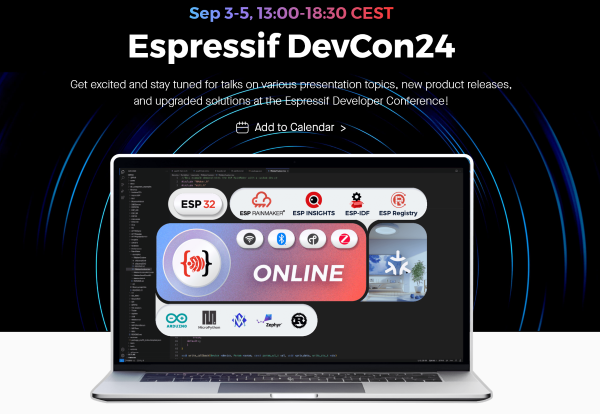
Espressif DevCon is on from September 3-5 this year. Talks will be from 13:00-18:00 CEST which is 21:00-02:00 AEST (so the end of the days are going to be rough!).
There are some interesting talks however, including Create Stunning UIs with LVGL, Mastering the ESP-IDF Build System, ESP-NOW indoors and RMT encoding details.
PySheets, now open-source

PySheets, previously closed-source, is now available under both the GPLv3 and a commercial license.
When I asked creator Chris Laffra about the decision to open source PySheets, this was his response:
“It was always the plan. With PyScript applications, it is hard to hide the source anyways, as they are downloaded by the browser. I had written an obfuscator and a special build to hide the source, but in the end I just gave up 🤓.”
“My goal is to make life for Data Scientists beter. So, I want to grow using the same model Python, NumFocus, and Jupyter Notebooks used. Closed source is more for Excel.”
“Of course, I would love to make some money off PySheets, so I am going for voluntary sponsoring, commercial license, and paid hosting. That should pay the bills.”
I hope your bills get paid, Chris!
Proteus VSM for MicroPython
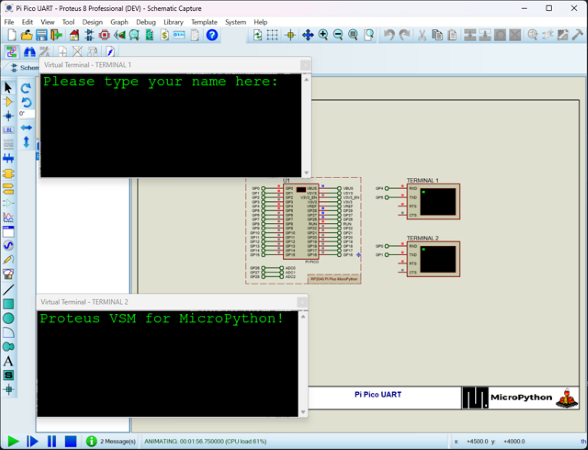
I haven’t used Proteus, but apparently it’s Circuit Simulation Software - it allows you to “…rapid prototype both hardware and firmware designs, in software”.
Proteus recently announced that they also support running MicroPython on their simulated microcontrollers.
ViperIDE
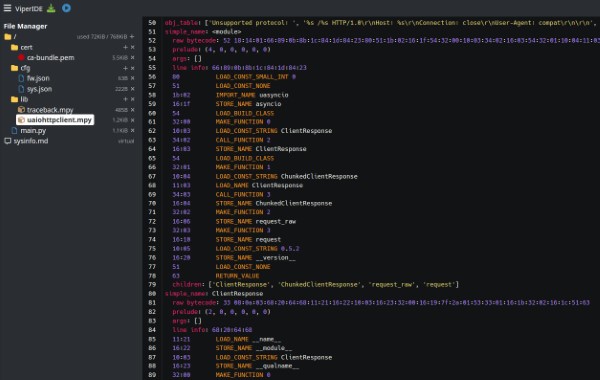
Volodymyr has continued work on ViperIDE (github), most recently adding the ability to disassemble to bytecode - and also support minification using pyminifier.
The implementation of these features is very interesting; for example pyminifier is actually running in the MicroPython (wasm) instance!
Volodymyr is moving swiftly with ViperIDE and it’s already become my recommended way to start for beginners.
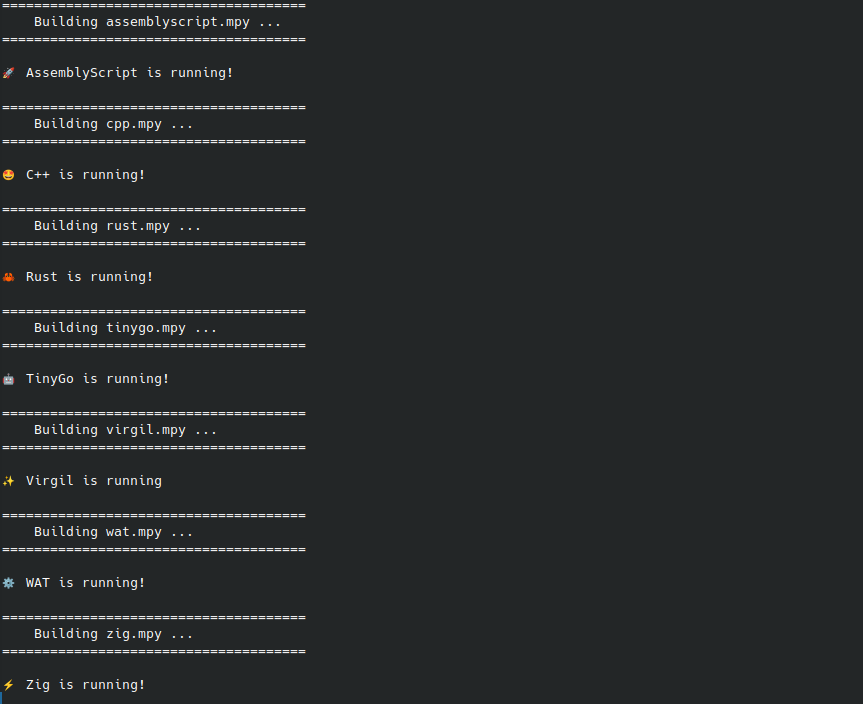
Hot-off-the-press! Volodymyr announced a successful POC: Compiling WebAssembly to MPY dynamic modules.
If I understand correctly, this is awesome; Write software in any language that can compile to WASM, compile that WASM to C and then build it into a native MicroPython module. Close-to-native performance in a dynamically loadable MicroPython module.
Matt’s New Hardware
It’s been a big month…
Waveshare
Waveshare have been churning out a bunch of interesting devices that run MicroPython very well!
- 3-button keyboard
- RP2040, 3x RGB LEDs, USB-C, nice housing
- Perfect mini-demo for USB-HID
- US$8-12
- ESP32 S3 with CNC Metal
Case
- ESP32-S3, 2MB PSRAM, 16MB flash
- 240x240 1.28” round (GC9A01) display with touch driver
- 6-axis IMU, battery charge circuit
- US$27
- ESP32-S3 8x8 RGB LED Matrix
- ESP32-S3, 2MB PSRAM, 4MB flash
- 8x8 RGB LED Matrix
- 6-axis IMU
- 25mm square
- US$9
- ESP32-C6 Zero
- Small C6 (RISC-V 160MHz, wifi/ble) board, 4MB flash, castellated
- 18 pins
- US$5
- ESP32-C6 Pico
- Larger C6 (RISC-V 160MHz, wifi/ble) board, 4MB flash, castellated
- GPIO expander (+7 pins)
- 40 pins
- US$7
- ESP32-S3 Touch LCD (watch)
- S3, 8MB PSRAM, 16MB flash
- 240x280 1.69” (ST7789V2) IPS touch display
- 6-axis IMU
- RTC
- Battery charge circuit
- US$22
Seeed Studio
I wanted the new XIAO RP2350, but I picked up a few extras…
- XIAO RP2350
- 2MB flash
- US$5
- XIAO ESP32-C6
- Dual-core RISC-V @ 160MHz
- 4MB flash
- Wifi/BLE/matter, oboard and ext antenna supported
- US$5.20
- XIAO ESP32-C3
- RISC-V @ 160MHz
- Wifi (no BLE), ext antenna
- 4MB flash
- US$5
- XIAO ESO32-S3
- Dual-core LX7 @ 240MHz
- Wifi/BLE, ext antenna
- 8MB PSRAM, 8MB flash
- Hi-density connector (camera available)
- US$7.50
- CAN Bus Breakout for
XIAO
- MCP2515 CAN controller
- SPI to CAN
- US$10
- 6x10 RGB Matrix for
XIAO
- 60 Neopixels in a small (21x18mm) board
- US$5
Tulip
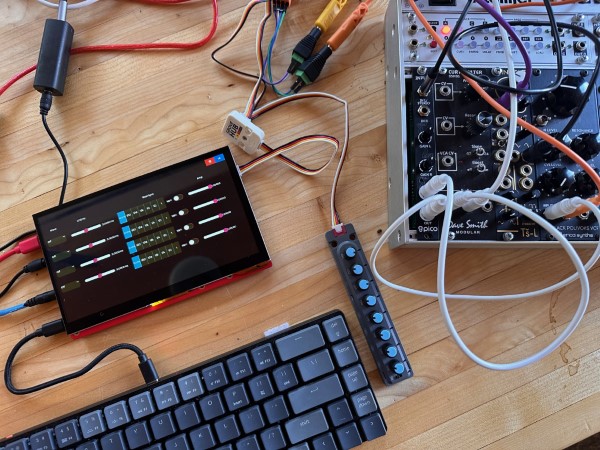
We’ve covered Tulip in the past but this thing is a beast! I’m hoping to have Brian Whiteman, creator, present at a future meetup.
If you haven’t seen the video from Floyd Steinberg it’s a must-watch.
US$60
Wemos

The S3 Mini Pro is the latest addition to the Wemos ‘D1’ range.
- ESP32-S3, 2MB PSRAM, 4MB flash
- 128x128 0.85” LCD (GC9107)
- 6-axis IMU
- 3x buttons, 1x RGB LED, 1xIR LED
- Colourful PCB!
AUD$15
Thanks to scruss for the heads-up!
Pimoroni
A package from Pimoroni just snuck in! Shiny new RP2350 boards…
- Tiny 2350
- RP2350, 4MB flash, Qw/ST, castellated
- AU$13
- Pico Plus 2
- RP2350, 16MB flash, 8MB PSRAM, Qw/ST, Debug
- Also an intriguing ‘SP/CE’ connector
- AU$20
- Display Pack 2.8”
- 320x240 IPS LCD (ST7789V)
- 4x buttons, RGB LED - and that SP/CE connector again
- AU$31
Hardware announcements
Pimoroni Pico Jumbo
As I mentioned, Pimoroni have 8x RP2350 boards and I’m not going to cover them all here (but you should!).
One I must share is the Pico Jumbo megacontroller!
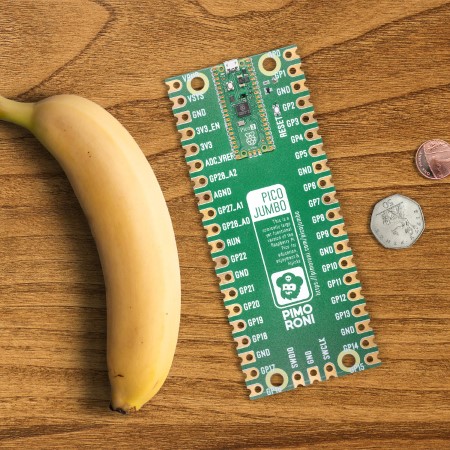
See the real Pico 2 up there?!
“An hilariously oversized but fully functional Raspberry Pi Pico 2 for demos, japes and shenanigans.”
It’s ridiculous and I love it.
AU$26 (preorder)
Espressif ESP32-P4
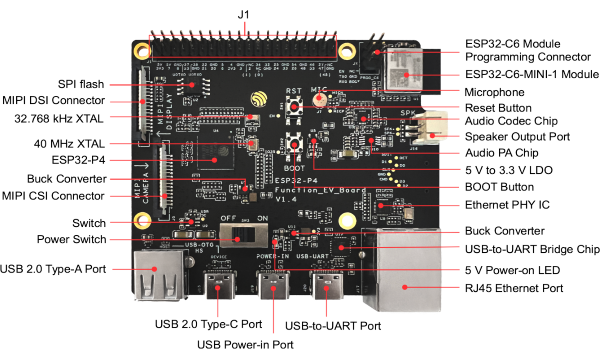
ESP32-P4 is in limited availability as the ESP32-P4 Function EV Board
Available (or not! Seems to be no longer for sale) at the official Aliexpress store.
- ESP32-P4: Dual-core 400MHz RISC-V
- ESP32-C6 for wifi/ble
- AI acceleration with 32MB PSRAM and 16MB flash
- Optional camera
- Optional display
Espressif have been promoting the P4 heavily so it’ll be an important micro to watch.
~AUD$100
(Brian of Tulip fame, has a CircuitPython port WIP and I have a MicroPython port WIP. We’ll get there!)
M5Stack
M5Stack have released a cute drone combo, the Fly and Joystick! The provided software uses ESP-NOW to communicate and, despite the tiny size, looks pretty impressive.
M5Stamp Fly
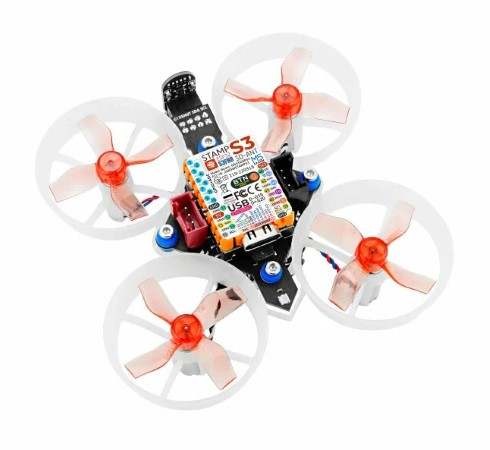
It’s about 80mm square (!).
Bunch of sensors!
- StampS3 (8MB flash)
- BMP280 barometric
- VL53L3 distance sensors
- PWM3901MB-TXQT optical flow
- BMM150 magnetometer
- BMI270 6-axis IMU
US$50
M5Atom Joystick
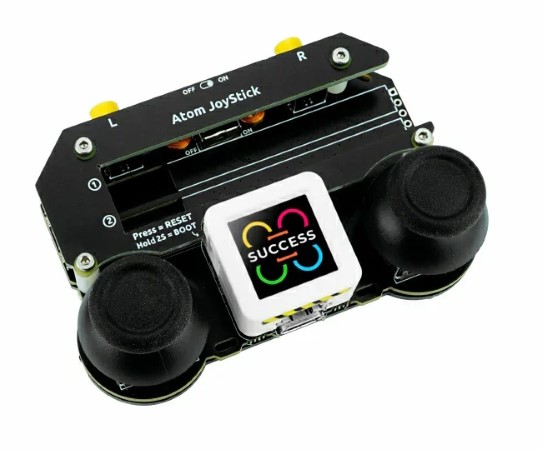
- Left/Right Joysticks, with buttons
- STM32F030F4P6 provides I2C interface to Atom
- Buzzer, RGB LEDs
- 300mAh Battery
- (Doesn’t come with the M5AtomS3)
US$30
LilyGo T-Deck Plus
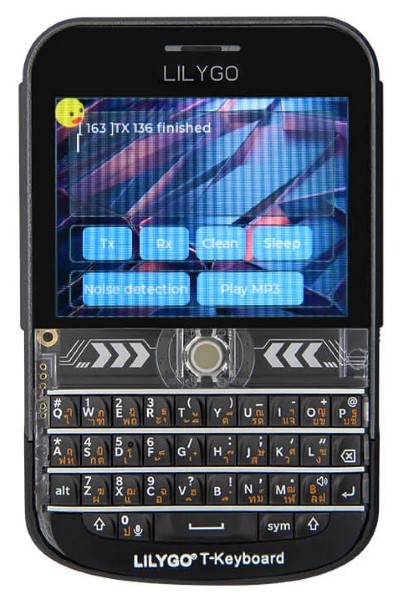
An update to their earlier model, the T-Deck Plus adds GPS, a 2,000mAh battery and a case. Their original T-Deck was definitely more DIY.
- ESP32-S3, 8MB PSRAM, 16MB flash
- 320x240 2.8” (ST7789) IPS LCD
- SX1262 LoRa radio
- GPS
- Mic, speaker, Blackberry-style keyboard, trackball
- 2,000mAh battery
US$72 (original model starts at US$43)
01Studio K230 Dev Board
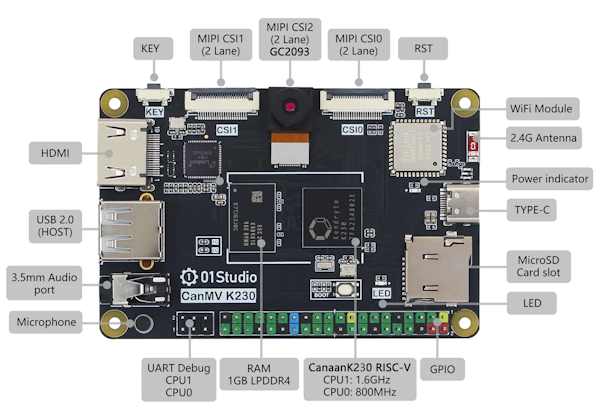
Kendryte K230 AI Development Board (01Studio AliExpress)
One of the more powerful microcontroller platforms!
- Kendryte K230: Dual-core RISC-V 1.6GHz/800MHz
- 1GB LPDDR4 RAM
- Optional 800x480 3.5” display (cap touch also optional)
- 1080P/60fps camera (up to 3x 1080P camera inputs)
- Wired Eth & Wifi
- 5xUART, 5xI2C, 6xPWM, 64xGPIO, 3xSPI
- 1080P HDMI output
- 4 lane 1080P MIPI display output
- 40 pin RPi header
- MicroPython port with OpenMV support
- Many computer vision examples (Face recognition, Barcode/QR code, YOLO object detection)
The Kendryte K210 made a splash a few years ago but didn’t quite catch on, maybe the K230 will have more success?
AUD$~80-120
Seeed Studio XIAO RA4M1
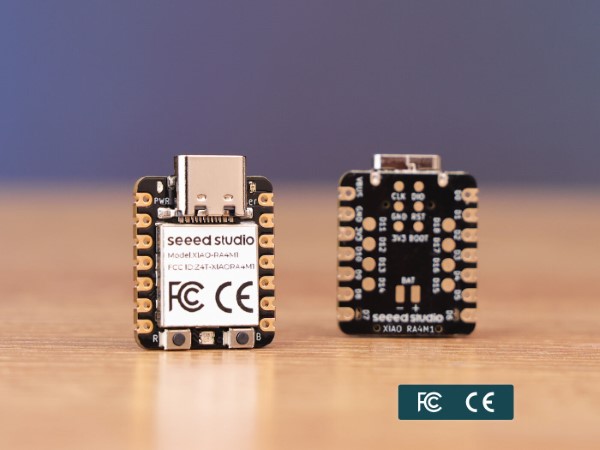
Just when I thought I had the XIAO box set…
- Renesas RA4M1 48MHz M4
- Same as Arduino Uno R4
- 256KB flash, 32KB SRAM, 8KB EEPROM
- 3 LEDs, 14bit ADC, 12bit DAC, CAN
- Standard 14 pin XIAO
- Plus 8 additional GPIO pads on rear
US$4.99
Projects
“4wins” by @legion
In preparation for a workshop at Hackzogtum, a hackerspace in Germany, Mastoden user @legion shared that they were working on a “4wins” game.
Lumanoi light sculpture
Voria Labs have created the beautiful Lumanoi wall-mounted light sculpture. They’re looking to secure crowdfunding in early 2025.
Creator of the device, @darco, shared this in the Discord #showcase-and-projects channel, explaining that it was powered by MicroPython. It’s also worth noting that the test rig also employs MicroPython.
Dr John
Mike Bell, ports MicroPython for Tiny Tapeout

Mike designed the RISC-V “Nano V” processor for Tiny Tapeout 4 and ported a minimal variant of MicroPython to run on it. And it all works!
Will Whang’s array of IMUs
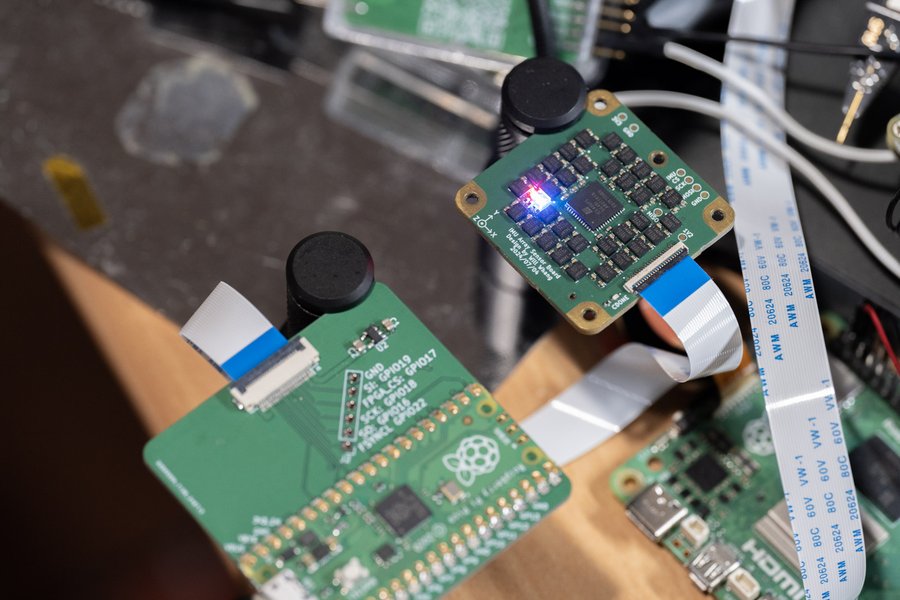
Based on some compelling research, Will Whang has built a 32x IMU array all connected to an iCE40 FPGA that collects and processes the data. A connected RPi Pico running MicroPython deploys the gateware to the FPGA and grabs the summary results as the FPGA spits them out.
The whole project is a fascinating investigation to see how well accuracy can be improved by using a low-cost array of IMUs to minimise interference and outliers - and allow a purely inertial system to be used for guidance.
Dave Bell’s MicroPython-powered retro-style incandescent light
A beautiful incandescent light powered by MicroPython. Created by Raspberry Pi engineer, Dave Bell, who gave a great explanation of how it was made: Retro Pico-powered incandescent lamp.
Hackaday articles

Hackaday’s Arya Voronova seems to be a fan of MicroPython; she’s recently published a couple of articles on our favourite embedded language:
MicroPython on the Amiga

The Amiga has a soft-spot in my heart. So I’m delighted to hear that a port of MicroPython is now available on Aminet.
This gives me even more motivation to fire up my Amige 4000/030…
Eye-following portrait
just_another_person has a great Instructables write-up on how to create an Eye-Following Portraint With Raspberry Pi Pico. Uses ultrasonics and servos for the effect. MicroPython code available.
HiVolt badge
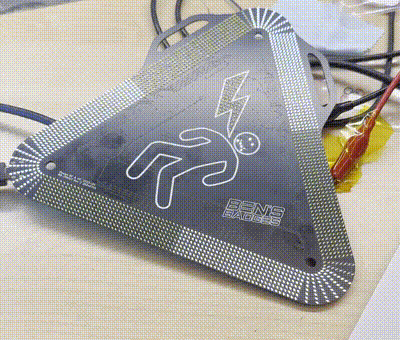
With 1,984 LEDs, the HiVolt badge is pretty bad-ass. Powered by an RP2040, including a joystick, accelerometer and an 1100mAh battery it appears to be impeccably built and looks great! MicroPython code (and schematic) available at Ben-s-Badges/hivolt.
Unfortunately (for us) the US$120 board seems to have been popular at DEF CON and is currently sold out.
Picotamachibi 2

Kevin McAleer is at it again, publishing a ton of detail on his Picotamachibi 2 project. It’a a virtual pet running on a RPi Pico 2 with a 1.3” display. As usual, Kevin explains things clearly and with exceptional quality - this is a fantastic beginner project.
Final Thoughts
Community “Legend Award”

Shout-out to Jon @jonnor Nordby!
Jon has triaged hundreds of MicroPython issues over the past couple of months, taking a chunk of time out of his weekends to identify issues that can be progressed…or closed. It’s a big effort and greatly appreciated, thanks Jon!
If you’re interested in Machine Learning, you should also check out Jon’s MicroPython library emlearn-micropython that enables MicroPython applications to run efficient ML models.
Who’s going to be #1000?
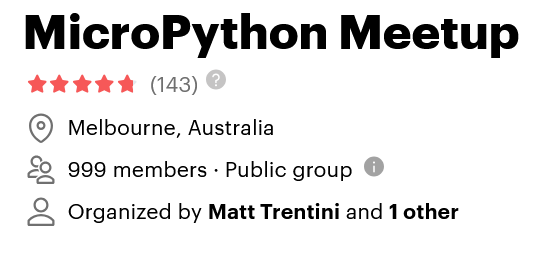
Hot-off-the-press! User #1000 is Eon.
…and yes, I still want to move away from Meetup. I just received an invoice for US$220 for six months use of Meetup. For a system that is buggy and pretty simple.
Favicon
Sparing you folks no effort!
![]()
Docker

Pro-tip: Relate to the juniors
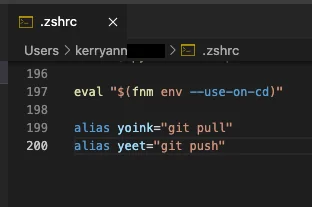
Thanks folks

